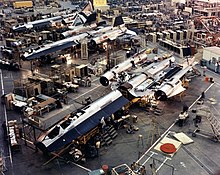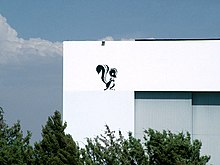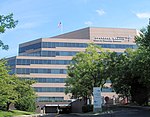
The Lockheed P-38 Lightning is an American single-seat, twin piston-engined fighter aircraft that was used during World War II. Developed for the United States Army Air Corps (USAAC) by the Lockheed Corporation, the P-38 incorporated a distinctive twin-boom design with a central nacelle containing the cockpit and armament. Along with its use as a general fighter, the P-38 was used in various aerial combat roles, including as a highly effective fighter-bomber, a night fighter, and a long-range escort fighter when equipped with drop tanks. The P-38 was also used as a bomber-pathfinder, guiding streams of medium and heavy bombers, or even other P-38s equipped with bombs, to their targets. Used in the aerial reconnaissance role, the P-38 accounted for 90 percent of American aerial film captured over Europe. Although it was not designated a heavy fighter or a bomber destroyer by the USAAC, the P-38 filled those roles and more; unlike German heavy fighters crewed by two or three airmen, the P-38 with its lone pilot was nimble enough to compete with single-engine fighters.

The Lockheed Corporation was an American aerospace manufacturer. Lockheed was founded in 1926 and merged in 1995 with Martin Marietta to form Lockheed Martin. Its founder, Allan Lockheed, had earlier founded the similarly named but otherwise-unrelated Loughead Aircraft Manufacturing Company, which was operational from 1912 to 1920.

The Lockheed P-80 Shooting Star was the first jet fighter used operationally by the United States Army Air Forces (USAAF) during World War II. Designed and built by Lockheed in 1943 and delivered just 143 days from the start of design, production models were flying, and two pre-production models did see very limited service in Italy just before the end of World War II. Designed with straight wings, the type saw extensive combat in Korea with the United States Air Force (USAF) as the F-80.

The Lockheed/Boeing/General Dynamics YF-22 is an American single-seat, twin-engine fighter aircraft technology demonstrator designed for the United States Air Force (USAF). The design was a finalist in the USAF's Advanced Tactical Fighter competition, and two prototypes were built for the demonstration/validation phase of the competition. The YF-22 won the contest against the Northrop YF-23, and the design was developed into the Lockheed Martin F-22 Raptor. The YF-22 has a similar aerodynamic layout and configuration as the F-22, but with differences in the position and design of the cockpit, tail fins and wings, and in internal structural layout.
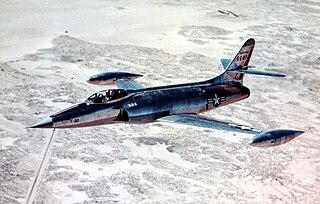
The Lockheed XF-90 was built in response to a United States Air Force requirement for a long-range penetration fighter and bomber escort. The same requirement produced the McDonnell XF-88 Voodoo. Lockheed received a contract for two prototype XP-90s. The design was developed by Willis Hawkins and the Skunk Works team under Kelly Johnson. Two prototypes were built. Developmental and political difficulties delayed the first flight until 3 June 1949, with Chief Test Pilot Tony LeVier at the controls. Embodying the experience gained in developing the P-80 Shooting Star, the XF-90 shared some design traits with the older Lockheed fighter, albeit with swept-wings; however, this latter design choice could not sufficiently make up for the project’s underpowered engines, and the XF-90 never entered production.

Lockheed Have Blue was the code name for Lockheed's proof of concept demonstrator for a stealth fighter. Have Blue was designed by Lockheed's Skunk Works division, and tested at Groom Lake, Nevada. The Have Blue was the first fixed-wing aircraft whose external shape was defined by radar engineering rather than by aerospace engineering. The aircraft's faceted shape was designed to deflect electromagnetic waves in directions other than that of the originating radar emitter, greatly reducing its radar cross-section.

Benjamin Robert Rich was an American engineer and the second Director of Lockheed's Skunk Works from 1975 to 1991, succeeding its founder, Kelly Johnson. Regarded as the "father of stealth", Rich was responsible for leading the development of the F-117, the first production stealth aircraft. He also worked on the F-104, U-2, A-12, SR-71, and F-22, among others.
Lockheed Martin Aeronautics Company is a major unit of Lockheed Martin with headquarters at Air Force Plant 4 in Fort Worth, Texas.

The Grumman XP-50 was a land-based development of the shipboard XF5F-1 Skyrocket fighter, entered into a United States Army Air Corps (USAAC) contest for a twin-engine heavy interceptor aircraft. The USAAC placed an order for a prototype on 25 November 1939, designating it XP-50, but it lost the competition to the Lockheed XP-49.

The Lockheed XP-49 was an advancement on the P-38 Lightning for a fighter in response to U.S. Army Air Corps proposal 39-775. Intended to use the new 24-cylinder Pratt & Whitney X-1800 engine, this proposal, which was for an aircraft substantially similar to the P-38, was assigned the designation XP-49, while the competing Grumman Model G-46 was awarded second place and designated XP-50.

The Lockheed J37 was one of the first turbojet engines designed in the United States. It was not considered very important when its development was first begun in the 1930s, and it was allowed to languish. By the time it was developed enough for production use, other engines, some British-derived, had surpassed it in performance. The design was later converted to a turboprop, the T35 and still later sold to Wright Aeronautical, where it saw some interest for use on what would become the B-52 Stratofortress, before that design moved to jet power. The J37 and T35 were built to the extent of a number of testbed examples but never entered production.
The Hughes D-2 was an American fighter and bomber project begun by Howard Hughes as a private venture. It never proceeded past the flight testing phase but was the predecessor of the Hughes XF-11. The sole D-2 was completed in 1942–1943.
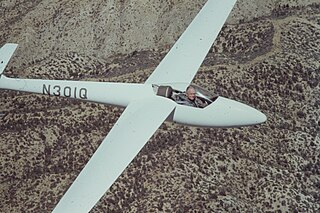
Henry Combs was a structural engineer at Clarence Johnson's famed Skunk Works division of Lockheed Corporation. He was Deputy Project Manager on the Lockheed U-2 program, Head Structural Engineer on the SR-71 Blackbird, and later, Technical Director of the Skunk Works. While he is most known for his integral work on the U-2, the SR-71 and the F-117 Nighthawk, he also worked on the F-104, Lockheed Constellation, C-130 Hercules, XP-58 Chain Lightning, and Lockheed JetStar.

The Lockheed XF-104 Starfighter was a single-engine, high-performance, supersonic interceptor prototype for a United States Air Force (USAF) series of lightweight and simple fighters. Only two aircraft were built; one aircraft was used primarily for aerodynamic research and the other served as an armament testbed, both aircraft being destroyed in accidents during testing. The XF-104s were forerunners of over 2,500 production Lockheed F-104 Starfighters.
A skunkworks project is a project developed by a relatively small and loosely structured group of people who research and develop a project, often with a very large degree of autonomy, primarily for the sake of radical innovation. The term originated with Lockheed's World War II Skunk Works project.
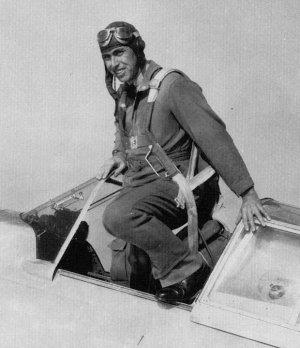
Benjamin Scovill Kelsey was an American aeronautical engineer and test pilot. Serving as America's chief fighter projects officer, he helped bring success in World War II to the United States Army Air Forces by initiating the manufacture of innovative fighter aircraft designs, and by working to quickly increase American fighter production to meet the needs of the coming war.

The Lockheed L-133 was an exotic design started in 1939 which was proposed to be the first jet fighter of the United States Army Air Forces (USAAF) during World War II. The radical design was to be powered by two axial-flow turbojets with an unusual blended wing-body canard design capable of 612 mph (985 km/h) in level flight. The USAAF rejected the 1942 proposal, but the effort speeded the development of the USAAF's first successful operational jet fighter, the P-80 Shooting Star, which did see limited service near the end of war. The P-80 was a less radical design with a single British-based Allison J33 engine, with a conventional tail.
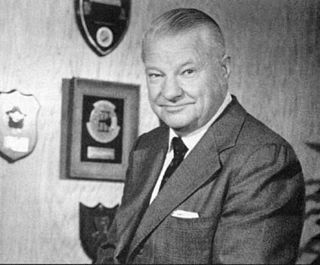
Clarence Leonard "Kelly" Johnson was an American aeronautical and systems engineer. He is recognized for his contributions to a series of important aircraft designs, most notably the Lockheed U-2 and SR-71 Blackbird. Besides the first production aircraft to exceed Mach 3, he also produced the first fighter capable of Mach 2, the United States' first operational jet fighter, as well as the first fighter to exceed 400 mph, and many other contributions to various aircraft.
Irven Harold Culver was an American aeronautical engineer.

Joseph Fulton "Joe" Ware Jr. was a flight test engineer at Clarence "Kelly" Johnson's famed Skunk Works in the Lockheed Corporation on the first two Air Force One's, the U-2, the SR-71 Blackbird, and many others from World War II and the Cold War, becoming Department Manager of Engineering Flight Test. He was the son of Joseph F. Ware Sr.


